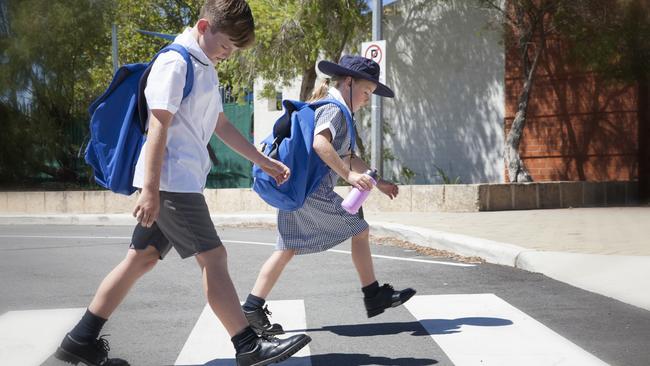Promoting kids’ wellbeing begins at the top level

Closer to home, children in flood-ravaged communities have been forced to evacuate, many losing their familiar family life, homes and treasured belongings, as well as their schools, and the friendships and community activities that are fundamental to their wellbeing and development. And the pandemic has disrupted childhood for every kid.
Despite being nearly a quarter of the population, children are largely overlooked by decision-makers. In Australia, public policy places the responsibility for children on the shoulders of parents, largely limiting government’s role to providing schools and protecting children from harm should things go wrong in the family.
The past two years have brought this backseat approach into sharp focus, with children too often being an afterthought in pandemic policymaking. While measures such as temporary increases to income support and free childcare benefited children for a short time, extended Covid restrictions have had adverse effects on many children, including increases in serious mental health problems at much younger ages.
Policy is typically made to address the concerns of adults, and the unique needs of children are easily overlooked. But as the pandemic edges into our rear-view mirrors, governments have an opportunity to shift from mere harm reduction to policies that actively promote children’s wellbeing.
Support measures rolled out during the pandemic show us nationwide co-ordination and investment to support the wellbeing of our people is possible. It’s this top-level co-ordination that is needed to improve policies and support for children and young people. Looking around the world, there are clear examples of how elevating children’s voices and putting their interests at the heart of policy can improve outcomes for the rest of a child’s life – it’s an investment in our citizens.
Accessible and culturally appropriate wraparound support services, as we observe in Nordic schools, are one example of a more co-ordinated approach. Locally, this model has shown strong results in Victoria at Our Place, where children and families have easy access to support in a school-based “one-stop shop” integrating early learning, schooling, health and community services, and adult education, training and employment support.
Such co-ordination starts within government. Recent efforts to elevate domestic violence and women’s safety in policymaking provide a model for doing the same for children’s wellbeing. Much like the Women’s Safety Taskforce, a child and family wellbeing taskforce would be led by ministers with primary responsibility for portfolios that affect the lives of children, such as health, education and social services.
A cabinet minister with specific responsibility for children would help to keep the unique needs of children front of mind.
For the health, wellbeing and development of children to be a national priority there needs to be clarity about the role of government, and proper accountability and co-ordination of effort.
In this country, children are considered criminally responsible at age 10. If we had a proactive policy approach to children’s wellbeing and our obligations under the UN Convention on the Rights of the Child, we would have raised the age of criminal responsibility to 14. This is line with medical evidence on the development of a child’s brain. There is also evidence that youth detention does not curb crime but is wasting public money, leading to a lifelong cycle of recidivism for some of our most vulnerable children.
Youth incarceration is one of the most pressing examples of why we need a co-ordinated policy approach to wellbeing, with children in youth detention overwhelmingly from families in the child protection system, experiencing poverty and disadvantage.
Crises such as a natural disaster, pandemic or war can rob young ones of their childhoods while reminding adults just how precious this early-life chapter is.
As we rebuild from the pandemic – and many children regain a sense of normalcy – we have an opportunity to transform our policy approach. This is the focus for Life’s Lottery: Backing Kids, the new season of the Paul Ramsay Foundation’s podcast in which experts, young people, advocates and policymakers discuss how we can improve wellbeing by putting children at the centre of government policy and budgets.
Anne Hollonds is the National Children’s Commissioner. Glyn Davis is chief executive of the Paul Ramsay Foundation.



Children’s voices often go unheard in decisions that greatly affect them. We see this clearest in times of crisis – currently, millions of Ukrainian children are sheltering in makeshift bunkers or attempting to flee to safety, sometimes unaccompanied.